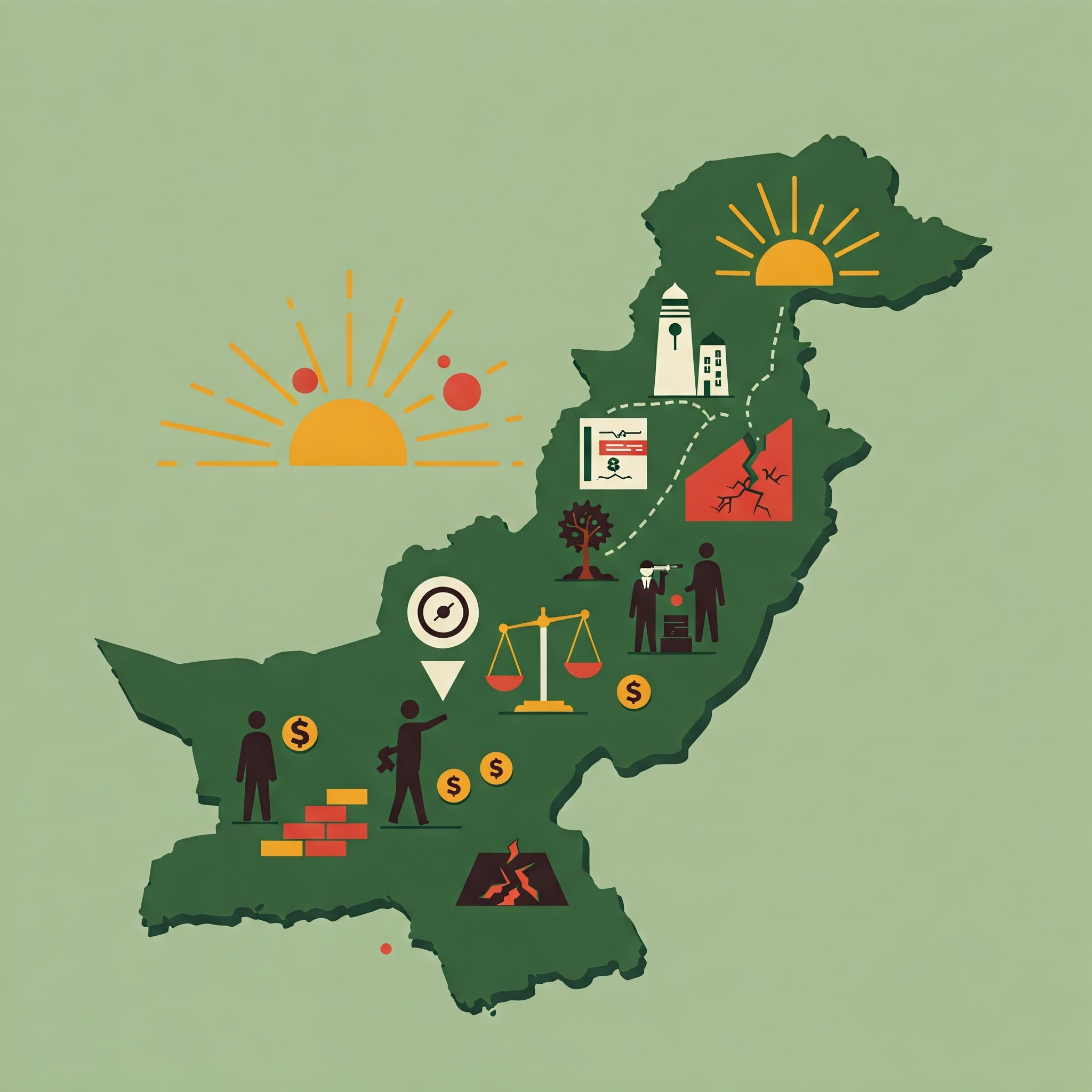The Shadow of Instability in Pakistan
Part 4 of Pakistan’s Potential Role in the New Global Tech and Manufacturing Shift
No analysis of Pakistan is complete without confronting the internal challenges that could undermine all these opportunities. The country faces a crucible of political, economic, and security issues. Politically, instability has been a recurring curse – governments swing between parties (or military influence), policies flip-flop, and business confidence suffers. In recent years, Pakistan has seen mass protests, a no-confidence removal of a sitting Prime Minister, and a precarious caretaker government setup.
This turbulence erodes investor trust. As a U.S. State Department report bluntly noted, Pakistan’s economy is hamstrung by “weak rule-of-law, corruption, political uncertainty, security concerns,” all of which make it a “challenging environment for investors.”. Political uncertainty and red tape were cited by both foreign and local firms as the top constraints to doing business in Pakistan. It’s hard to plan a factory or a software park when you’re not sure who will be in power next year or what the tax policy will be. Thus, without addressing governance and stability, Pakistan risks scaring away the very investors it courts.12
Continues below…
In this five-part series, we delve deep into Pakistan’s tech capabilities, strategic positioning, and how it could redefine itself amidst global change. We'll explore international examples, internal challenges, and strategic recommendations, offering insights and perspectives from around the world.
Series Overview:
Part 1: Shifting Sands—Understanding the New Global Economic Landscape
Part 2: Pakistan’s IT Sector—A Rising Digital Hub?
Part 3: How China’s Industrial Shift Could Transform Pakistan
Part 4: Stability at Stake—Addressing Pakistan’s Internal Challenges
Part 5: Lessons from Global Successes and a Roadmap for Pakistan’s Future
Economically, Pakistan has been on a rollercoaster of distress. External debt and balance-of-payments crises have brought the country repeatedly to the brink of default, requiring IMF bailouts to avert collapse. Inflation spiked above 30% in 2023, squeezing household budgets and fueling public anger. A youth entering the workforce today encounters high unemployment and few prospects in a stagnant economy.
This “demographic dividend” of a young population could quickly turn into a demographic time bomb if millions of frustrated young people see no future. Over 60% of Pakistan’s 240 million people are under 30 – a huge potential labor force for industry and IT – if they can be gainfully employed. But if the economy cannot create jobs fast enough, social unrest and brain drain are real threats. We already see many talented Pakistani engineers and entrepreneurs emigrating to more stable environments. Those who stay voice growing disenchantment on social media and in the streets. Simply put, economic distress and lack of opportunity can fuel instability, creating a vicious cycle where instability then further hurts the economy.
The security situation adds another layer of risk. After a relative lull in the late 2010s, militant violence has resurged. The Pakistani Taliban (TTP) and other extremist groups have become emboldened, in part due to developments next door in Afghanistan. When the U.S. withdrew from Afghanistan in 2021, it left behind an estimated $7 billion worth of military equipment. The Taliban regime seized this arsenal—including firearms, night-vision goggles, and armored vehicles—and now much of it has bled across the border into Pakistan, arming militant groups. Security experts warn that American-made weapons are boosting the lethality of the TTP and Baloch insurgents, who have killed hundreds in attacks over the past two years. Videos circulating online show militants with modern sniper rifles and thermal scopes, outmatching local police. The result has been a surge in terror attacks in Pakistan—a 27% increase in 2022 alone compared to the previous year.3
In a significant recent development highlighting these security risks, Pakistan captured Muhammad Sharifullah, a senior ISIS-K commander responsible for the deadly Kabul Airport bombing in August 2021. The operation, conducted jointly with the CIA, led to Pakistan handing Sharifullah over to the United States for prosecution. This incident underscores not only the active threat posed by terror groups operating within Pakistan’s borders but also the critical need for international cooperation to combat extremism. Despite such successes, the overall security environment remains precarious, jeopardizing key projects like CPEC (which has seen attacks on Chinese engineers) and further eroding investor confidence.4
The specter of instability—whether from political chaos, economic meltdown, or militant violence—is the central risk undermining Pakistan’s ambitions. Without stability, even the best-laid development plans will falter.
This series concludes with “Part 5: Lessons from Global Successes and a Roadmap for Pakistan’s Future".



